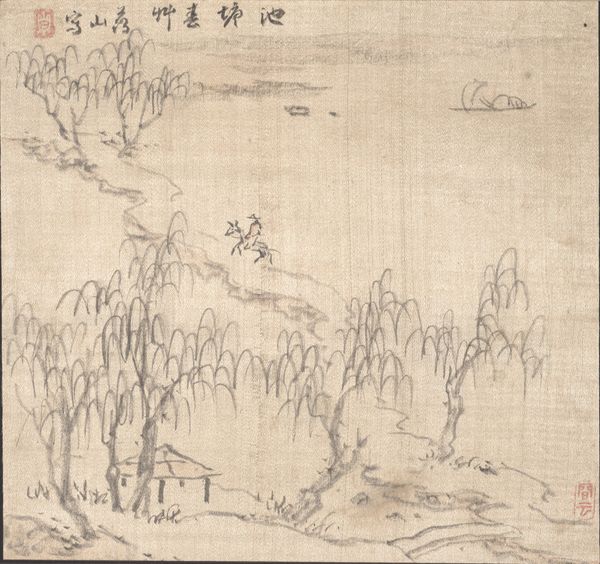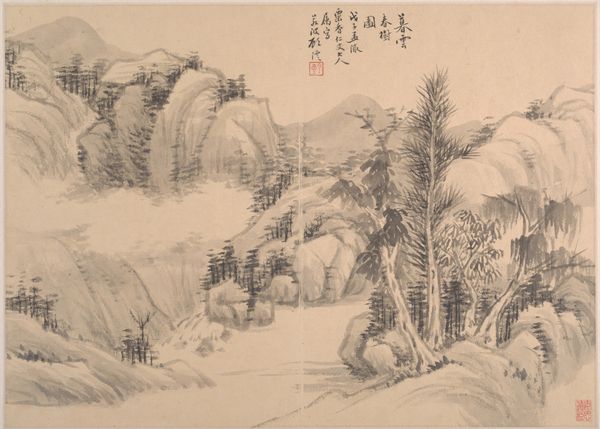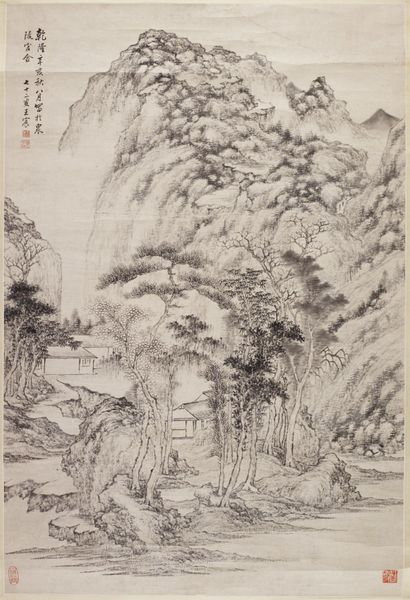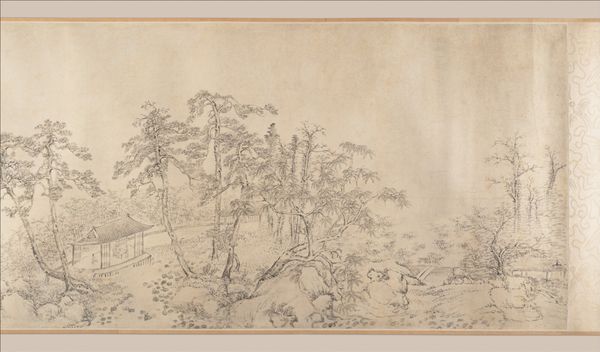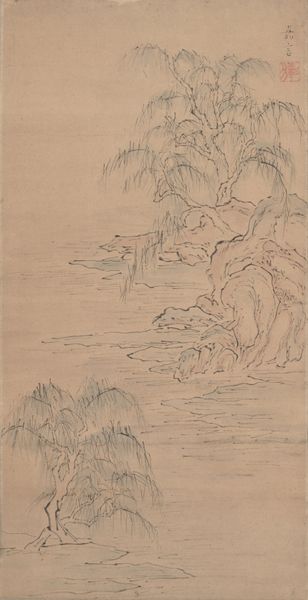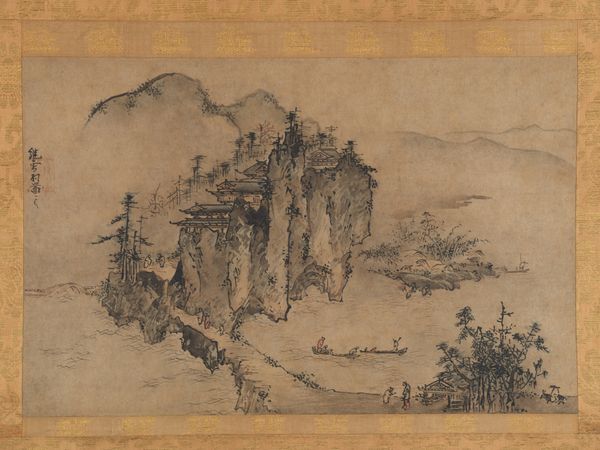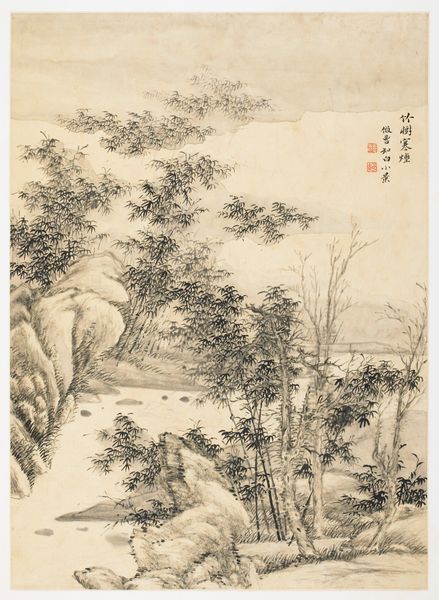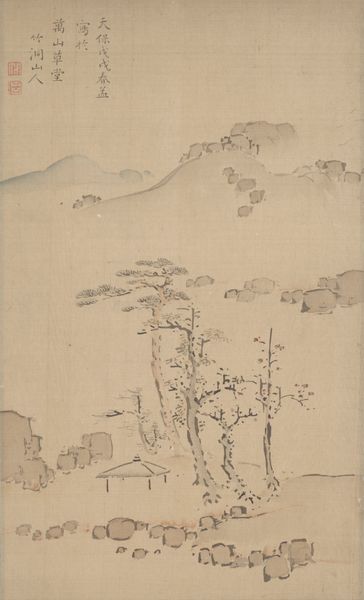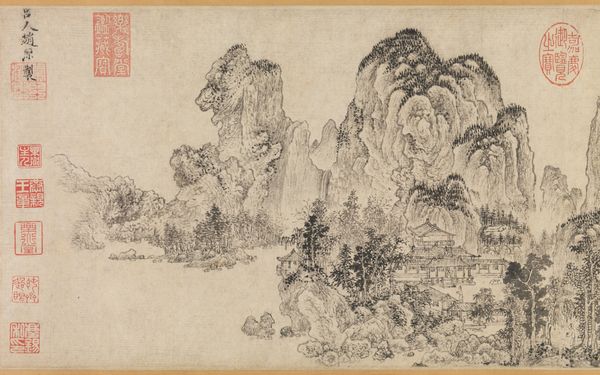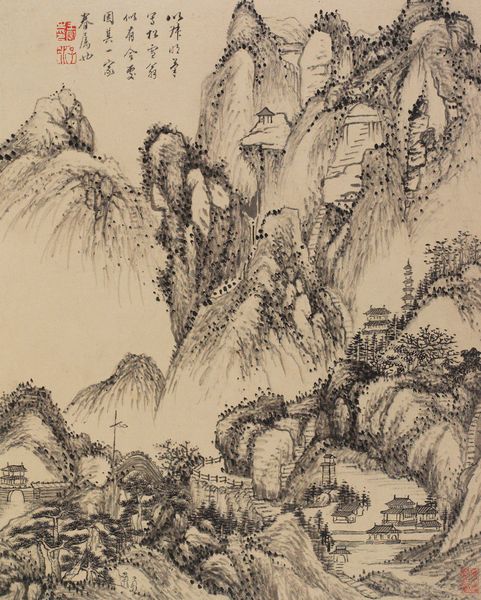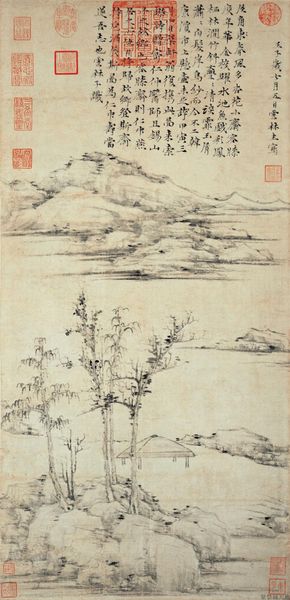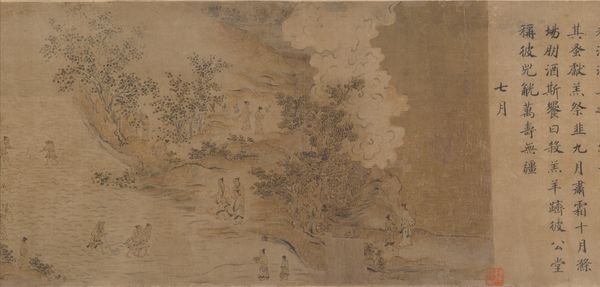
drawing, paper, ink
#
drawing
#
asian-art
#
landscape
#
paper
#
ink
#
line
Dimensions: 8 7/8 x 368 in. (22.54 x 934.72 cm) (image)
Copyright: Public Domain
Gu Deyi created "Misty River and Layered Peaks" in the 17th century using ink on paper. The material, ink, lends itself to a monochrome palette, allowing for subtle gradations of tone and texture. The artist’s engagement with the paper support is crucial here. The absorbent nature of the paper allows the ink to bleed and spread, creating soft, blurred edges that evoke the atmospheric effects of mist and distance. This speaks to traditional Chinese landscape painting, known as "shan shui," which emphasizes not just the depiction of nature, but also the artist's emotional response to it. The skilled manipulation of the brush is evident in the varying line weights and textures, built through layers of ink washes. The absence of bright colors encourages a contemplative viewing experience. The work invites us to slow down and engage with the subtleties of tone and texture. Ultimately, the piece embodies the philosophical underpinnings of Chinese art, where the process of creation is as important as the final product, and where the artist's inner state is reflected in the work itself.
Comments
minneapolisinstituteofart almost 2 years ago
⋮
The scene depicted in this handscroll is a panorama of riverbanks with trees, houses, bridges, and figures set among an ample stretch of water. Across the river, the rolling hills open into a vista that curves to the left, as if drifting between sky and water. The artist’s pictorial vision presents the scene as more nonreligious than sacred. The imagery is concrete, but subtly evokes the transcendent realm. A thatched pavilion is perched on a cliff near the waterfall, a common motif in Chinese paintings. It is a reference to the work of Ni Zan, a well-known Yuan dynasty (1271–1368) artist who depicted pavilions like this in many of his paintings, meant to imply a sense of purity. The Yuan dynasty was an unstable period in which China was ruled by Mongolia. Thus, the unhindered lifestyle associated with Ni Zan—who was unwilling to serve the Yuan court and fled society to live in nature—was admired by many scholars. They included this motif as a tribute to him and to emphasize the spirit of hermitage.
Join the conversation
Join millions of artists and users on Artera today and experience the ultimate creative platform.
